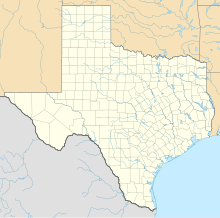First Battle of Adobe Walls
| First Battle of Adobe Walls | |||||||
|---|---|---|---|---|---|---|---|
| Part of the American Indian Wars, Apache Wars | |||||||
 Adobe Walls |
|||||||
|
|||||||
| Belligerents | |||||||
|
|
Kiowa Comanche Plains Apache |
||||||
| Commanders and leaders | |||||||
|
|
Dohäsan Satank Guipago Satanta Iron Shirt |
||||||
| Strength | |||||||
| 335 soldiers 72 native scouts 2 artillery pieces |
<1,400 warriors | ||||||
| Casualties and losses | |||||||
| 6 killed 25 wounded |
Official Estimate: 60 killed and wounded 1 known dead |
||||||
|
|
|||||||
The First Battle of Adobe Walls was a battle between the United States Army and American Indians. The Kiowa, Comanche and Plains Apache (Kiowa Apache) tribes drove from the battlefield a United States Expeditionary Force that was reacting to attacks on white settlers moving into the Southwest. The battle, on November 25, 1864, resulted in light casualties on both sides but was one of the largest engagements fought on the Great Plains.
The Battle of Adobe Walls occurred on November 25, 1864, in the vicinity of Adobe Walls, the ruins of William Bent's abandoned adobe trading post and saloon, located on the northern side of the Canadian River 17 miles (27 km) northeast of present-day Stinnett in Hutchinson County. The battle came about when Gen. James H. Carleton, commander of the military district of New Mexico, decided to punish severely the plains tribes of the Kiowa and Comanche, whom he deemed responsible for attacks on wagon trains on the Santa Fe Trail. The Indians saw the wagon trains as trespassers who killed buffalo and other game the Indians needed to survive. As the American Civil War drained available troops, attacks on the Great Plains worsened, leading in the later part of 1863 to cries from settlers for protection.
Gen. Carleton wanted to put an end to the raids, or at least to send a sharp signal to the Indians that the Civil War had not left the United States unable to protect its people. He selected Col. Christopher (Kit) Carson to lead the expeditionary force as the most seasoned veteran Indian fighter at his disposal. Col. Carson took command of the 1st Regiment New Mexico Volunteer Cavalry, with orders to proceed against the winter campgrounds of the Comanches and Kiowas, which were reported to be somewhere in the Palo Duro Canyons of the southern Panhandle area, on the south side of the Canadian River. The Carson expedition was the second invasion of the heart of the Comancheria, after the Antelope Hills Expedition.
...
Wikipedia

